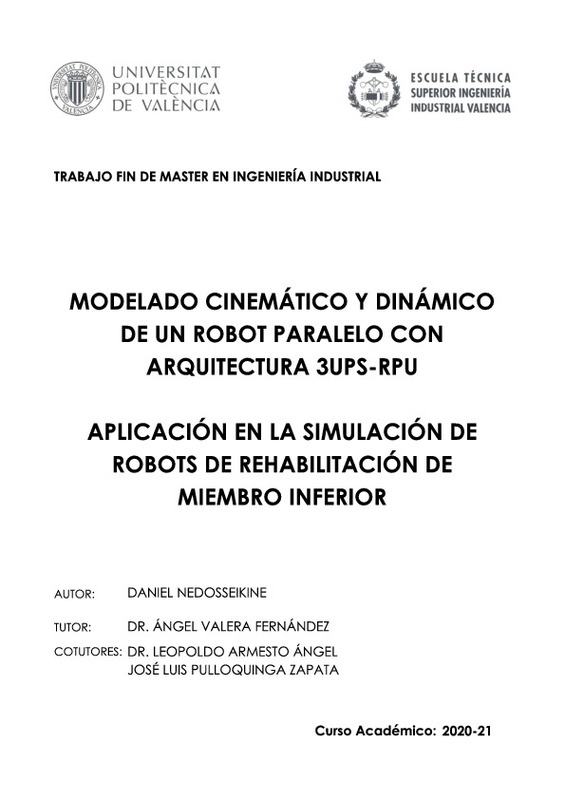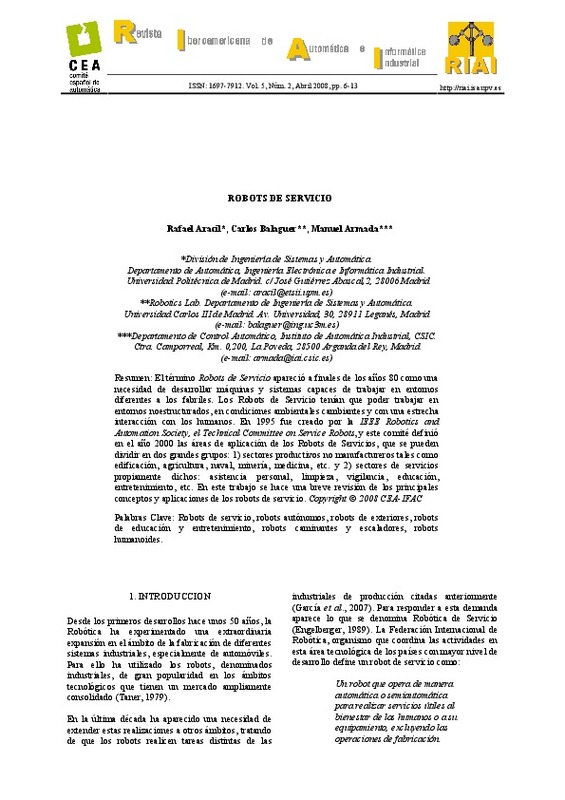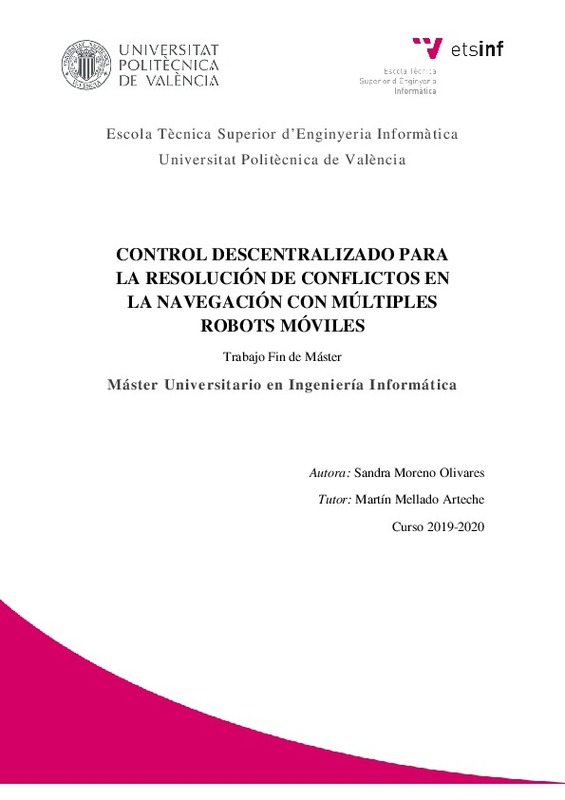|
Resumen:
|
[ES] En los últimos años, los campos de aplicación de la robótica han crecido enormemente. Así, además de las aplicaciones industriales típicas (pick&place, soldadura por arco o por puntos, atención de máquinas), hoy en ...[+]
[ES] En los últimos años, los campos de aplicación de la robótica han crecido enormemente. Así, además de las aplicaciones industriales típicas (pick&place, soldadura por arco o por puntos, atención de máquinas), hoy en día los robots se están empleando en la medicina, en servicios de asistencia, operaciones de rescate, etc.
Con el presente Trabajo Fin de Máster se propone trabajar con el modelado y la simulación de robots paralelos. Para ello se partirá del diseño CAD de un robot paralelo de 4 grados de libertad orientado a la rehabilitación de miembros inferiores del cuerpo humano. Se trata de un robot que se está desarrollado en ámbito de un proyecto de investigación del Plan Nacional.
Dicho diseño se importará al simulador de robots CoppeliaSim. Se trata de un simulador que incorpora un entorno de desarrollo integrado y que se basa en una arquitectura de control distribuido. De esta forma, cada objeto/modelo puede ser controlado individualmente a través de un script embebido, un plugin, un nodo ROS o BlueZero, un cliente API remoto o una solución personalizada.
Con este simulador se tendrá que resolver primero el problema cinemático directo e inverso, para poder determinar la relación entre las variables de articulación activas y las variables del espacio cartesiano. Posteriormente se tendrá que resolver también el problema dinámico del robot, obteniéndose la relación entre los términos dinámicos, centrífugos, de Coriolis y gravitacionales, y las fuerzas aplicadas sobre los actuadores del robot (acciones de control).
Gracias a este robot virtual se podrán analizar diferentes controladores no lineales de posición, como son los controladores por dinámica inversa, los controladores pasivos o los controladores adaptativos. También será posible realizar la co-simulación del robot (pudiendo ejecutarse el controlador y el robot virtual en la misma máquina o en máquinas distintas) para validar las diferentes estrategias de control que se quieran utilizar.
Además, este trabajo permitirá realizar también un conjunto de aplicaciones muy interesantes. Por ejemplo, se podrá proporcionar como entradas al robot virtual los valores de las articulaciones del robot paralelo real del laboratorio. Esto permitirá ver en tiempo real en el robot simulado la evolución del robot real sin necesidad de una señal de vídeo, requiriendo por ello un menor ancho de banda en las comunicaciones. También permitirá validar las diferentes misiones que se están desarrollando con el robot paralelo, como por ejemplo el análisis de las singularidades.
[-]
[EN] Over the last years, the robotic application fields have experienced a big growth. Thanks to this, appart from the common industrial applications (pick&place, arc or spot welding, machine tending), nowadays robots are ...[+]
[EN] Over the last years, the robotic application fields have experienced a big growth. Thanks to this, appart from the common industrial applications (pick&place, arc or spot welding, machine tending), nowadays robots are being used in medicine, assistance services, rescue operations, etc.
The goal of this Master's Thesis is the modeling and simulation of parallel robots. The work will be based on a CAD design of a 4 degree-of-freedom parallel robot aimed at the rehabilitation of the lower limbs of the human body. The robot is being developed within the scope of a research project of the Spanish National Plan.
This design will be imported into the CoppeliaSim robot simulator. This simulator includes an integrated development environment and is based on a distributed control architecture. This way, each object/model can be controlled individually via an embedded script, a plugin, a ROS or BlueZero node, a remote API client or a custom solution.
With this simulator, the direct and inverse kinematic problem will have to be solved first, in order to determine the relationship between the active articulation variables and the variables of the cartesian space. Subsequently, the dynamic problem of the robot will also have to be solved, obtaining the relationship between the dynamic, centrifugal and Coriolis and gravitational terms and the forces applied on the robot's actuators (control actions).
Thanks to this virtual robot, different non-linear position controllers can be analyzed, such as inverse dynamics controllers, passive controllers or adaptive controllers. Furthermore, this will allow the co-simulation of the robot (running the controller and the virtual robot in the same machine or different ones) to validate the different control strategies.
In addition, this Master's Thesis will also allow to carry out a set of very interesting applications, for example, the values of the joints of the real parallel laboratory robot can be provided as inputs to the virtual robot. This way, it would be possible to see the evolution of the real robot in real time in the simulated robot without the need of a video signal, thus requiring a lower communication bandwidth. It will also allow to validate the different missions that are being developed with the parallel robot, such as the analysis of singularities.
[-]
|










